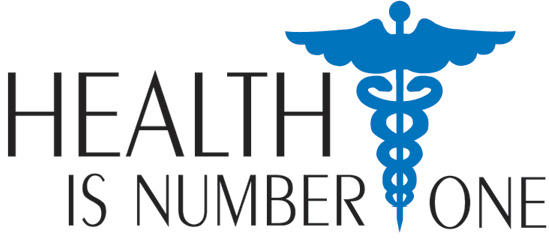Health Library ~ Family Medicine in Mullica Hill, NJAll Material copyright Craig M. Wax, DO unless otherwise denoted. Contraception: Know your choices Copyright American Osteopathic Association Over the past several years, unwanted pregnancies in the United States have decreased, in part because of increased sexual education in schools and at home. This decrease also can be attributed to people's fear of untreatable sexually transmitted diseases (STDs) and a growing commitment to abstinence. But sex continues and so too does the risk of pregnancy. For young women who choose to be sexually active, the good news is that the once guarded door of contraception has opened. As a result, a sometimes overwhelming array of choices stands before them. It is therefore vital to make an informed and educated choice when selecting the best form of contraception for yourself. So Many Choices "I listen to my patients when it comes to helping them select an appropriate form of birth control," says Margaret Nusbaum, D.O., an osteopathic family physician who practices in North Carolina. "I also take into account if they want to have children in the future, if they have ever been diagnosed with an STD, if their religion plays a role in their contraceptive options, and if they are certain they are in a monogamous relationship." Barrier Methods Male and Female Condoms Condoms are recommend for individuals who have a variety of sexual partners, who have sexual intercourse infrequently, or who have STDs. For young women who are certain they are in monogamous, disease-free relationships, other barrier method contraceptive options are also available, as noted below. Diaphragm, Cervical Cap The diaphragm should be left in place for at least 6 hours but no longer than 24 hours after intercourse. If multiple sessions of intercourse occur during this time period, fresh spermicide should be placed in the vagina while the diaphragm is still in place. The cervical cap is another barrier method of contraception that is available by prescription only. The cap is a soft rubber cup with a round rim. Like the diaphragm, the cervical cap is sized by a health professional for the proper fit. It is inserted into the vagina and protects against pregnancy, including repeated intercourse, for up to 48 hours. Hormonal Contraceptives The most commonly chosen form of birth control in the U.S. is the birth control pill. While birth control pills do not protect against STDs, they are one of the most effective means for preventing pregnancy-aside from abstinence. Known as the "pill," and available only by prescription, this form of birth control suppresses the monthly release of an egg from the ovaries by combining the actions of the hormones estrogen and progestin. The pill is taken daily. In addition to providing birth control, the pill may help clear up acne, make a woman's menstrual cycle more regular, and help protect against pelvic inflammatory disease, ovarian cancer and endometrial cancers. Although it is a common choice for many women, the pill does have its side effects including weight gain, nausea, headache, breast tenderness, irregular bleeding, and depression. Also, women who smoke and take the pill put themselves at increased risk for cardiovascular disease, high blood pressure, blood clots, and blockage of the arteries. Injectable and Implantable Progestins Injected in the arm or buttocks by a health professional once every three months, Depo-Provera is considered to be one of the most convenient forms of birth control available. In addition, it is extremely effective in preventing pregnancy. Depo-Provera works by inhibiting ovulation, by changing the cervical mucus to help prevent sperm from reaching the egg, and by changing the uterine lining to prevent the fertilized egg from implanting itself. Norplant, which is an implantable progestin, is also considered to be highly effective for preventing pregnancy. This form of contraceptive consists of matchstick-sized rubber rods that are surgically implanted under the skin of the upper arm. From this location, the contraceptive steadily releases levonorgestrel. Norplant is available in two types. The six-rod form can help prevent pregnancy for up to five years, while the two-rod form remains effective for up to three years. As with oral hormonal contraceptives, the potential side effects of injectable and implantable progestins may include weight gain, breast tenderness, and irregular or missed periods. Some Other Types of Contraception "Natural family planning and the withdrawal method both have a pretty high rate of failure," Dr. Nusbaum. notes "Both partners must be very strict and careful when they have intercourse. In addition, neither of these forms of birth control protects against STDs." Periodic abstinence involves not having sexual intercourse on those days during a woman's menstrual cycle when she is most likely to become pregnant. Generally speaking, this period runs from seven days before ovulation to three days after. Withdrawal is another highly unreliable from of birth control used by many people. The withdrawal method involves a male removing his penis from the vagina right before ejaculation. "Women need to be aware that small amounts of semen are released before ejaculation," cautions Dr. Nusbaum. "It takes just one sperm, even if the male ejaculates outside of the vagina, to get you pregnant." The Safest Means of Birth Control Although the number of young women who are choosing to abstain from sexual intercourse is rising, many more are choosing to become sexually active. "For the young woman who is concerned about seeing her family physician for birth control, Planned Parenthood is an excellent option," recommends Dr. Nusbaum. "Planned Parenthood offers young women birth control and gynecological exams at rates that are based upon income. In some cases, a young woman may not have to pay anything at all for contraceptives." As physicians who emphasize prevention and wellness, D.O.s strongly support the U.S. Department of Health and Human Services Healthy People 2010 initiative in the quest to improve quality of life and increase the number of years of healthy life. For more information on osteopathic medicine, or to locate a D.O. in
your area, call the AOA at 1.800.621.1773, ext. 8252 or visit the AOA's
Web site
Did You Know...? * Abstinence is the only form of birth control that is 100 percent effective. * Approximately six out of every 10 pregnancies in the U.S. are unplanned. * Vaginal spermicides are known to have a 21 percent failure rate. * A condom is the only contraceptive device that helps to prevent transmissions of STDs. * Women who smoke are often warned against taking the pill.
Sources: National Campaign to Prevent Teen Pregnancy, Planned Parenthood Federation of America, Inc., Centers for Disease Control and Prevention, and the American Osteopathic Association. You can contact these organizations for more information: National Campaign to Prevent Teen Pregnancy
Planned Parenthood Federation of America, Inc.
Centers for Disease Control and Prevention
Modified 04/13/02
|

